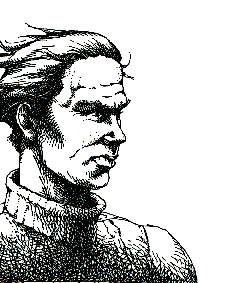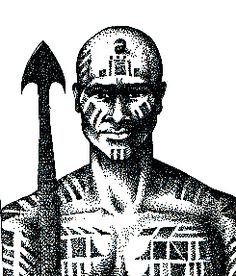This is a continuation of the previous chapter in which the author describes the chief mates of the Pequod and their harpooneers.
The second mate is a happy-go-lucky man named Stubb whose easy-going attitude contrasts sharply with the seriousness of Starbuck. Despite the dangers of his profession, Stubb remains carefree: “Long usage had, for this Stubb, converted the jaws of death into an easy chair.” A distinguishing feature of Stubb is his pipe, which he is constantly smoking. The author attributes his positive attitude to this: “against all mortal tribulations, Stubb’s tobacco smoke might have operated as a sort of disinfecting agent.”
 |
| Stubb |
The third mate is a guy named Flask: “a short, stout, ruddy young fellow, very pugnacious concerning whales, who somehow seemed to think that the great Leviathans had personally and hereditarily affronted him.” Flask has no reverence for the majesty and grandeur of whales. To him, they are no more than “water rats” that need to be exterminated.
 |
| Flask |
Starbuck’s harpooner is Queequeg, about whom we already know.
 |
| Queequeg |
Stubb’s harpooner is a Native American man named Tashtego, a great hunter on land and sea.
 |
| Tashtego |
Flask’s harpooner is a large African-American man named Dagoo. Interestingly, each of the harpooneers is non-white. On this point, the author comments: “Herein it is the same with the American whale fishery as with the American army and military and merchant navies, and the engineering forces employed in the construction of the American Canals and Railroads.” The point is that, much of the actual building of America was done by non-white immigrants.
 |
| Dagoo |
